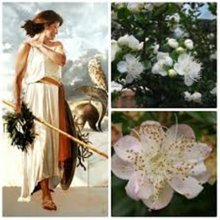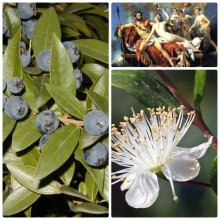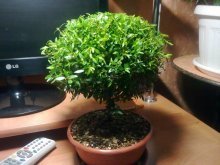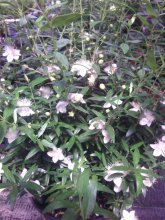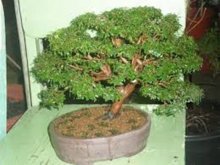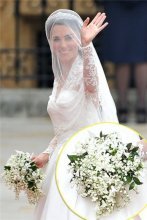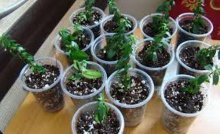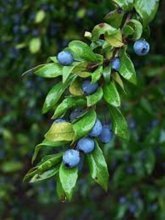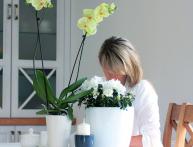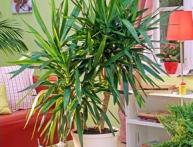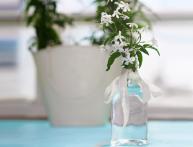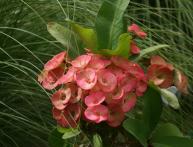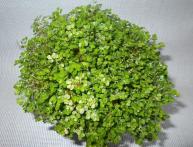Indoor myrtle flower, planting and care, propagation by seeds and cuttings
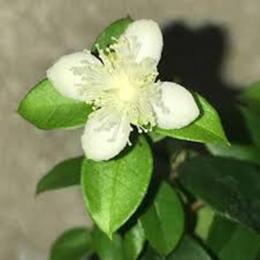
Myrtle - an evergreen shrub with a characteristic aroma, numbering over 100 varieties. In the natural environment it reaches a height of 2 m or more.
The shrub is famous for its content of valuable essential oils and bactericidal properties. Very often grown as an indoor plant.
Content:
- Indoor myrtle flower - description of the plant
- What does the flower symbolize, what signs are associated with it, the meaning of the name
- Growing myrtle as a houseplant
- Features of caring for myrtle in summer and winter, caring for flowering myrtle
- Propagation of myrtle by seeds and cuttings
- Pests and diseases, how to deal with them
Indoor myrtle flower - description of the plant
Belongs to the Myrtaceae family, which also includes plants such as eucalyptus, guava and cloves. It is an evergreen shrub, which in apartment conditions often does not exceed 0.5 m in height. It grows naturally in South America, New Zealand and parts of Australia.
Grown in indoor and greenhouse conditions myrtle communis. The leaves of the shrub are small, lanceolate, have a dark green color and a shiny coating, and are located opposite on the stems.
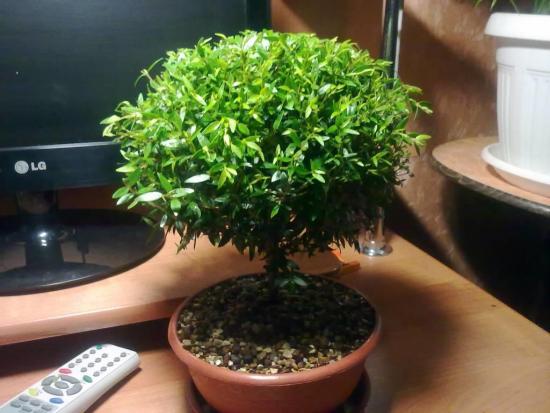
The flowers are solitary or collected in racemes, small, mostly white. Occasionally you can find inflorescences of a light pink hue. A pleasant fragrance emanates from a flowering plant.
Flowers appear in early summer and dry by autumn.After flowering, fruits with a dark red or black and blue color are formed, which can be eaten.
The drupes, about 1 cm in size, are quite juicy, but bitter. The leaves and flowers contain essential oils that give the bush its characteristic aroma.
To make the bush look neat and tidy, they resort to pruning. The crown is formed depending on preferences. You can get a spherical, pyramidal or other shape.
A flower is placed in a house not only for aesthetic purposes. It is also famous for its antimicrobial and phytoncidal properties. It is recommended to place the potty in the rooms of children who often suffer from colds. It is also used in medicine and cosmetology.
What does the flower symbolize, what signs are associated with it, the meaning of the name
The name of the flower comes from Greek, and is translated as balm or liquid incense. Mirtovoe oil is often used in temples. There is a legend that Adam and Eve were allowed to take one plant from the Garden of Eden. And they chose the myrtle tree. It became a reminder of the former holiness of man and a symbol of the hearth.

In ancient times, special symbolism was attributed to the bush. Most often, myrtle was associated with peace, tranquility, love and pleasure. A wreath made of branches was an indispensable attribute at weddings. This tradition has reached our times. Brides at royal weddings in Great Britain decorate their bouquets with flowers and twigs of bushes.
The ancient Greeks believed that the main meanings of myrtle were glory, power and high position. The meeting of the victors of wars took place with fragrant branches bush in hand. During the Renaissance, people attributed to it the meaning of eternal love and fidelity.
Mentions were also found in the Bible.A branch of myrtle was in the beak of a dove, which became a messenger of salvation during the Great Flood.
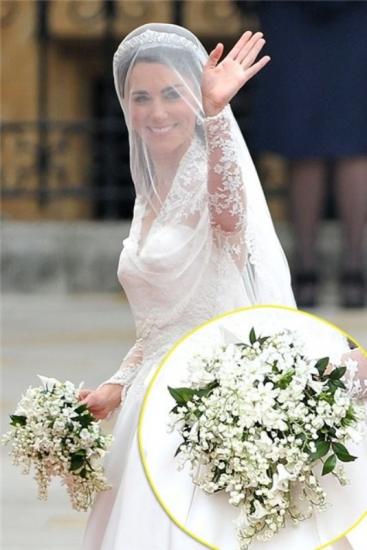
The plant is also shrouded in many signs and superstitions:
- Europeans believe that if it grows at home, it will bring peace and love to residents, cleanse the energy system and protect against disease. However, if the bush dies, then happiness will leave the family.
- In Muslim countries the opinion is the opposite. It is believed that in a dwelling where myrtle grows, a young man or woman they won't find the other half.
- The Greeks believe that if you pick a twig from a bush, a person will remain young and energetic for a long time.
- With his help, the gypsies won over the right people and even put them into a state of hypnosis.
Some believe that in order for prophetic dreams to appear, it is necessary to place three myrtle leaves at the head of the bed.
Parts of the bush are still used to create amulets and amulets - they make beads, bracelets, and tie bags with branches. Some peoples use the bush in various rituals and love magic.
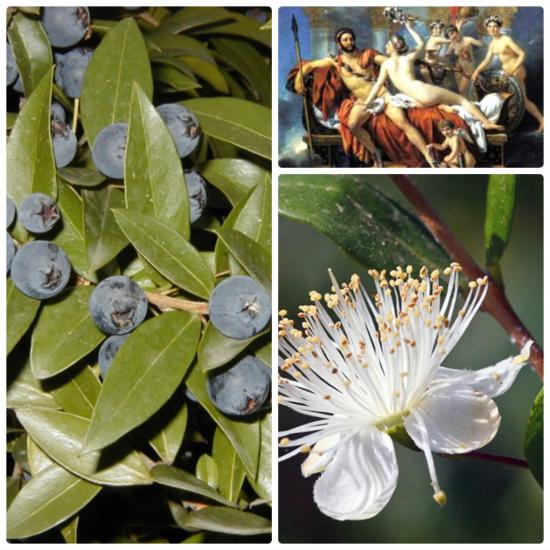
Myrtle is considered a plant that should be kept in the home. The bush is not suitable for keeping in offices and public places.
Growing myrtle as a houseplant
A flower is beautiful when it is strong and healthy; the right plant can provide such qualities. care. Maintaining myrtle with the right approach does not require much effort. It is enough to follow simple rules.
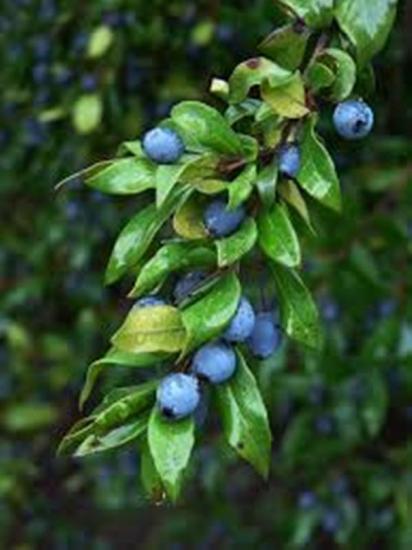
Location and lighting
Unlike many plants, it is not afraid of drafts. Therefore, you can safely place it in well-ventilated rooms. Under such conditions, the bush secretes phytoncides more actively. A great place for a pot is a kitchen windowsill.
Loves plenty of light. Choose the most illuminated locations.Do not be zealous and expose the pot to the very heat. Western, eastern and shaded southern windows are best suited. In summer you can take myrtle out onto the balcony. If the bush does not have enough light, it stretches out and dims. Excessive exposure to direct sunlight the leaves are drying and curl up.
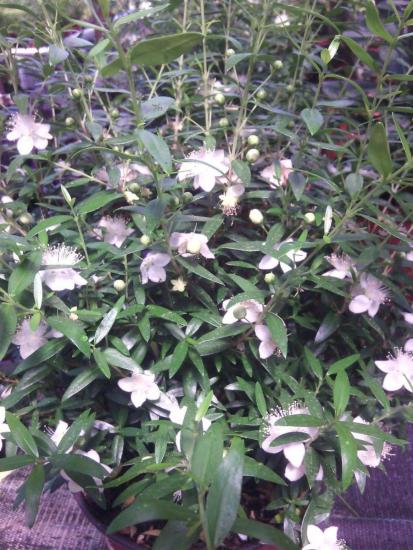
Watering and air parameters
Needs moist air, like in its native subtropics. In indoor conditions, ensuring the required level is not so easy, especially during the heating season. Therefore, it is advisable to pamper the flower with sprays as often as possible.
Does not tolerate lack of moisture well, turns yellow and withers. Add water regularly. In case of prolonged absence of watering, it is recommended to completely immerse the pot in water for a while. Constant stagnation and “swamp” in the container will also not be beneficial. Take lukewarm, settled water.
The soil
It is advisable thatrunt was as similar as possible to the one in which a flower grows in nature. Mix turf, humus, river sand and peat soil. You can purchase ready-made soil mixtures.
Top dressing
Different fertilizers are used, depending on the expected effect. To make the bush bloom faster, apply phosphate fertilizers. For growing a small tree -bonsai use nitrogen-based fertilizers or mixtures for decorative foliage plants.
Pruning
To preserve the decorative appearance of the bush, they resort to pruning. The plant tolerates this procedure well. When pruning the upper shoots, the myrtle will take on the appearance of a bush. If you pinch the side branches, we get an elongated silhouette. Pruning is carried out in March-early April and after flowering is completed.
Planting and transplanting
Young specimens are replanted annually, and adult plants – every few years. Take fresh loose soil, be sure to organize drainage from perlite or brick chips. Transplantation is carried out in the spring.
Features of caring for myrtle in summer and winter, caring for flowering myrtle
A plant with pronounced periods of growing season and dormancy. Accordingly, care at different times will vary slightly.
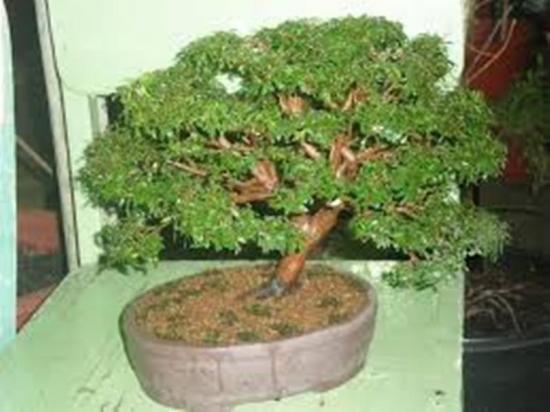
Summer care
From the beginning of spring to autumn, the temperature regime is set in the range of 22-24ºC. The pot is placed in a warm, well-lit room. To avoid direct sunlight, shading is organized.
In the warm season, the bush is given ventilation on the balcony or veranda. Water the bush often, spraying whenever possible. Fertilizers are applied once every 1-2 weeks. The beginning of spring is the best time for pruning and transplants.
It is necessary to pay attention to the flower during flowering. For pollination, use a soft brush with natural bristles. After a while, fruits will appear on the bush, which can be used for further propagation.
Winter care
In winter, the shrub enters a dormant period that lasts until spring. In the cold season, watering is reduced. It is advisable to move the pot to a room with a temperature of no more than 12 °C. If the myrtle is left in a warm place, the crown should be sprayed regularly.
In cool weather, water procedures are not needed. In general, the plant is resistant to temperature fluctuations and tolerates a range from 0 to 38°C.
If temperatures are too high in winter, the plant may shed its leaves. However, in this case you should not worry. In spring the crown will recover.
The plant needs light even during dormancy.When daylight hours are short, artificial lighting is provided with phytolamps.
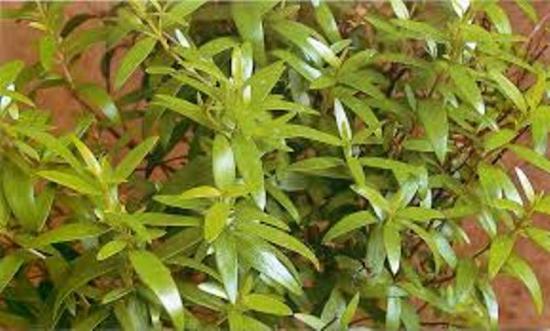
Propagation of myrtle by seeds and cuttings
Can be propagated indoors by seeds and cuttings. Each method has its own characteristics.
Cuttings
Cuttings are the easiest and most reliable way for a beginner to propagate indoor myrtle. Specimens obtained in this way bloom faster. The most suitable material is obtained from the lower or middle shoots. You can leave the cuttings after spring pruning.
Before planting, the lower cut is treated with root and the cutting is immersed in a mixture of peat (or leaf soil) and sand. Take a low, wide container and cover the plant with a glass container on top to create a greenhouse effect.
The cuttings are regularly ventilated. For roots to form, a temperature of about 20 °C is needed. The plant is transplanted into a new pot after a month, and then after a year.
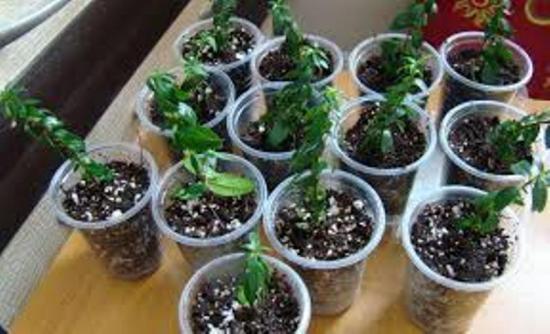
Planting seeds
The seeds obtained from the fruits are planted in loose soil made of sand and peat. The container is covered with polyethylene or glass, ventilated regularly. Germination is carried out at a temperature of 20°C. When the sprouts have leaves, they are transplanted into separate containers.
It is worth considering that when propagated by cuttings, the bush will bloom in the third year, and when planting seeds - no earlier than in the fifth.
Pests and diseases, how to deal with them
When maintaining indoor myrtle, a gardener may encounter some difficulties. The plant is subject to disease and attack by pests.
The bush can be attacked by mealyworms, aphids and whiteflies. Then the owner will notice parasites on the leaves and a general deterioration in the appearance of the shoots. To control pests, the flower is treated with actara or actellik.It is recommended to wash off spider mites or tips with soap and water first.
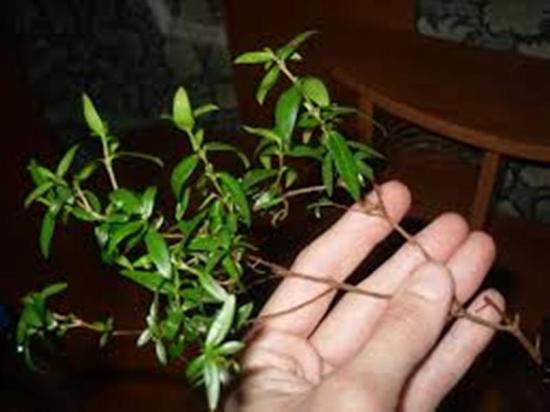
The following problems may also occur:
- Drying and curling of leaves. May be caused by lack of watering and dry air. Add more water and spray the plant.
- Blackening of leaf tips and falling. Often associated with high temperature and low humidity in winter. To improve the situation, optimize the parameters.
- Leaves turning pale and curling. Often occurs with intense sun exposure. Choose a location with light shade for the pot.
- The flower stretches upward. The problem occurs when the flower is in the shade.
Many troubles with myrtle can be avoided by normalizing maintenance and care. If your flower begins to look worse, check the basic parameters. With proper care, myrtle grows and pleases flowering.
By forming the crown at will, we get a neat decorative tree. The plant will decorate the house and bring comfort.
You will learn about all the features of caring for myrtle when watching the video:

